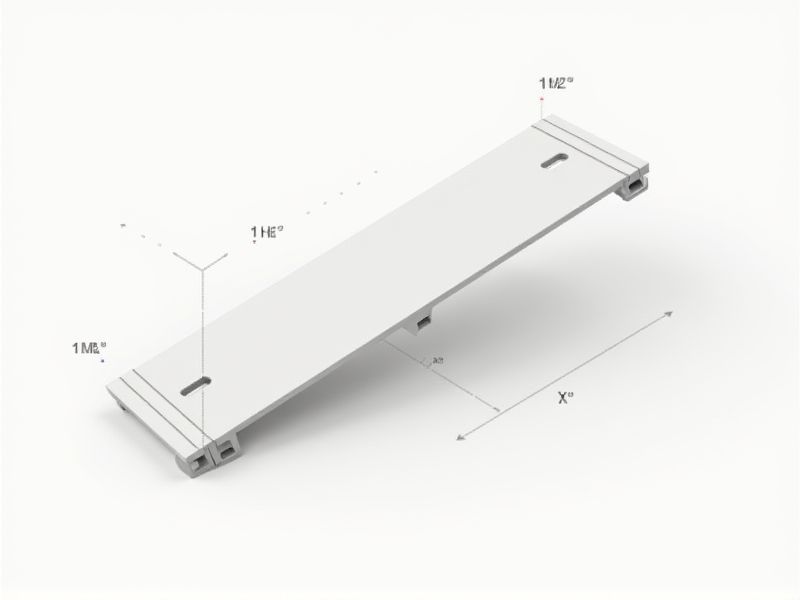
When creating a presentation, the standard dimensions for slides are typically 4:3 (standard) or 16:9 (widescreen). Most modern presentations use the 16:9 aspect ratio, which measures 13.33 x 7.5 inches when set for printing or 1920 x 1080 pixels for digital screens. The 4:3 ratio, measuring 10 x 7.5 inches, is still preferred for legacy projectors or older screen formats. Choosing the correct dimensions ensures your slides appear correctly and professionally across different devices and platforms.
Aspect Ratio
The aspect ratio of your slides significantly impacts visual presentation, with common ratios like 16:9 and 4:3 defining how content is displayed. For instance, a 16:9 aspect ratio is ideal for HD displays, perfectly aligning with current digital media standards. In contrast, a 4:3 aspect ratio, although less prevalent, can be advantageous for print-related content or specific business environments. Ensuring the correct aspect ratio enhances the audience's engagement and improves overall readability, making it crucial for any effective presentation.
Slide Width
The ideal slide width for presentations typically measures 16:9, which is preferred for modern displays and projectors. Using a standard width of 1920 pixels ensures optimal clarity and engagement when showcasing visuals. Your slide content should balance between images and text, maintaining a minimum of 30% whitespace for better readability. Studies indicate that presentations with clear formatting and adequate spacing can improve audience retention rates by up to 50%.
Slide Height
The standard height for presentation slides is typically 7.5 inches or 19.05 centimeters, ensuring optimal visibility in various settings. Adjusting your slide height to maintain this standard enhances readability and clarity, especially for audiences in large rooms or online platforms. Utilizing a 16:9 aspect ratio, which is widely accepted, allows for better compatibility with most projectors and displays. For your next presentation, prioritizing this height standard can significantly improve audience engagement and message retention.
Inches Vs. Centimeters
The standard slide size in presentation software typically measures 13.33 inches by 7.5 inches, which translates to approximately 33.87 cm by 19.05 cm. This size ensures optimal viewing on widescreen displays and enhances visual appeal during presentations. When using centimeters, you may find it easier to understand sizes in terms of familiar measurements, especially in regions that utilize the metric system. Keeping your slides within these dimensions helps maintain a professional appearance across various display formats.
4:3 Ratio
A 4:3 aspect ratio for slides is optimal for presentations, particularly when displaying on older projectors and screens, ensuring that your visuals do not get cropped. This format offers a balanced view, making it easier for you to present detailed information without losing essential elements of your graphics or text. The 4:3 ratio is especially effective for content-heavy slides, allowing for a comprehensive layout that accommodates charts, images, and bullet points. When preparing your slides, aim for a resolution of 1024 x 768 pixels to achieve the best clarity and visual impact.
16:9 Ratio
A 16:9 ratio has become the standard for slide presentations, providing a widescreen format that enhances visual impact. This aspect ratio is optimal for most modern displays, ensuring that your content fits seamlessly on TVs, projectors, and computer screens alike. By utilizing this ratio, you can create presentations that are both engaging and easy to follow. Consider using a resolution of 1920 x 1080 pixels (Full HD) to achieve crisp, high-quality visuals that capture your audience's attention.
A4 Size
The A4 size, measuring 210 mm by 297 mm, is commonly used for presentations and documents. When creating a slide presentation for A4 format, maintaining a resolution of 300 DPI ensures high-quality visuals. For optimal readability, use a font size of at least 24 points for body text, enhancing visibility even from a distance. You can also incorporate a margin of at least 15 mm on all sides to ensure that crucial content remains within the printable area.
Portrait Mode
Portrait Mode enhances your photography by emphasizing subjects with a shallow depth of field, often achieving bokeh effects that beautifully blur the background. With a typical aperture range of f/1.8 to f/2.8, this mode optimizes light capture, resulting in striking contrast and vibrant colors. Modern smartphones often utilize advanced software algorithms to detect faces and edges, ensuring sharpness on the subject while softly fading away distracting elements. Your experience is further refined with stabilizing features that reduce motion blur, yielding professional-quality portraits in various lighting conditions.
Custom Dimensions
Custom dimensions enable you to tailor your analytics to capture specific data points that matter most to your business. For instance, businesses utilizing Google Analytics can define up to 20 custom dimensions per property, allowing for precise tracking of user behavior and segmenting of your audience. By leveraging these custom dimensions, you can enhance your reporting capabilities, ensuring that you gain insights that are directly relevant to your operational goals. Proper implementation of custom dimensions ensures that your data-driven decisions are informed by granular insights rather than just general trends.
Presentation Software Compatibility
When creating presentations, software compatibility is crucial, as an estimated 75% of users encounter compatibility issues on various platforms. Popular presentation software includes Microsoft PowerPoint, Google Slides, and Apple Keynote, each supporting different file formats such as PPTX, ODP, and PDF. Ensuring that your presentations can be seamlessly accessed on multiple devices maximizes audience reach, as over 60% of presentations are viewed on mobile devices. To enhance your presentation's effectiveness, consider using standardized templates and fonts that translate well across different software applications.
